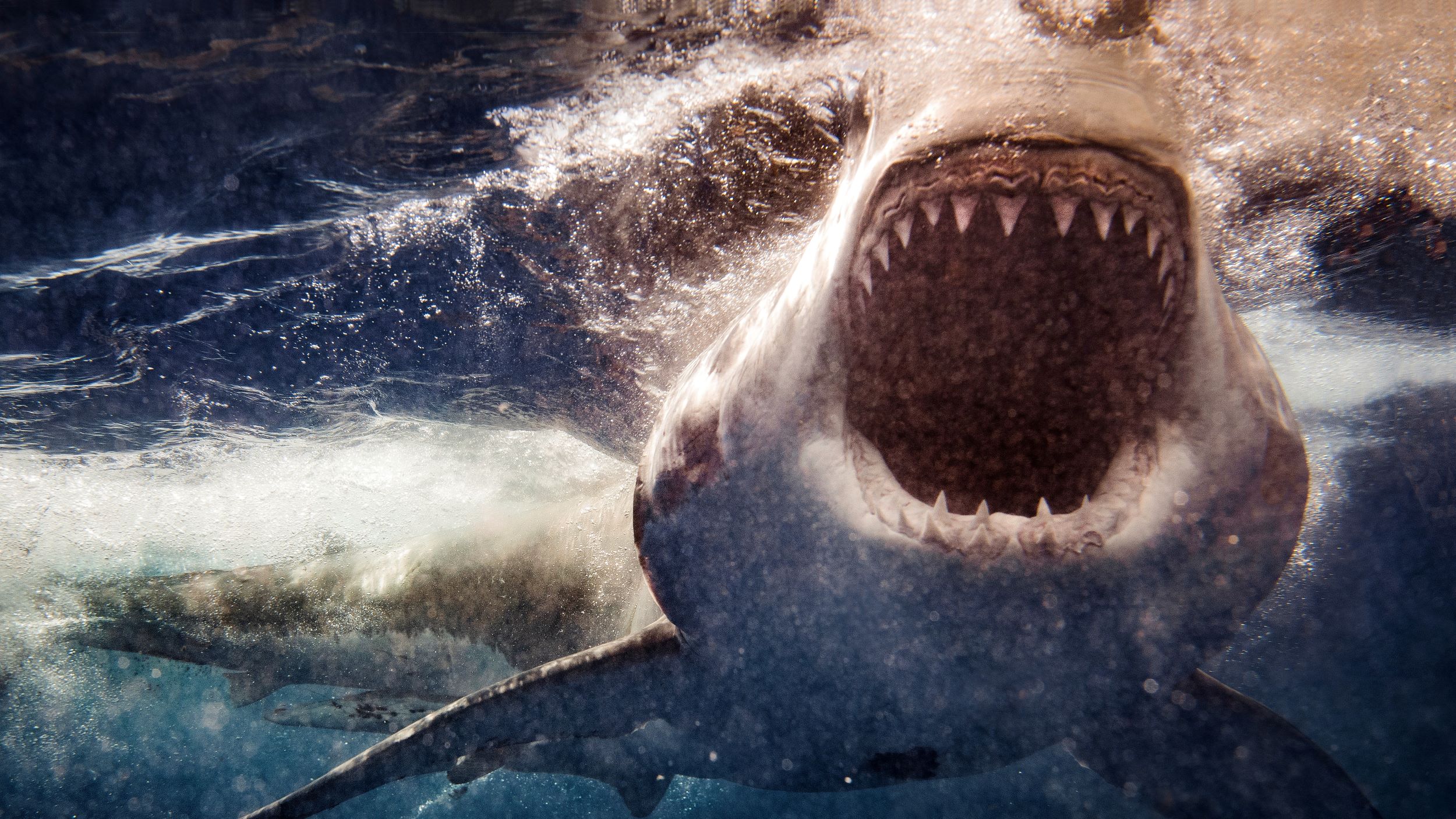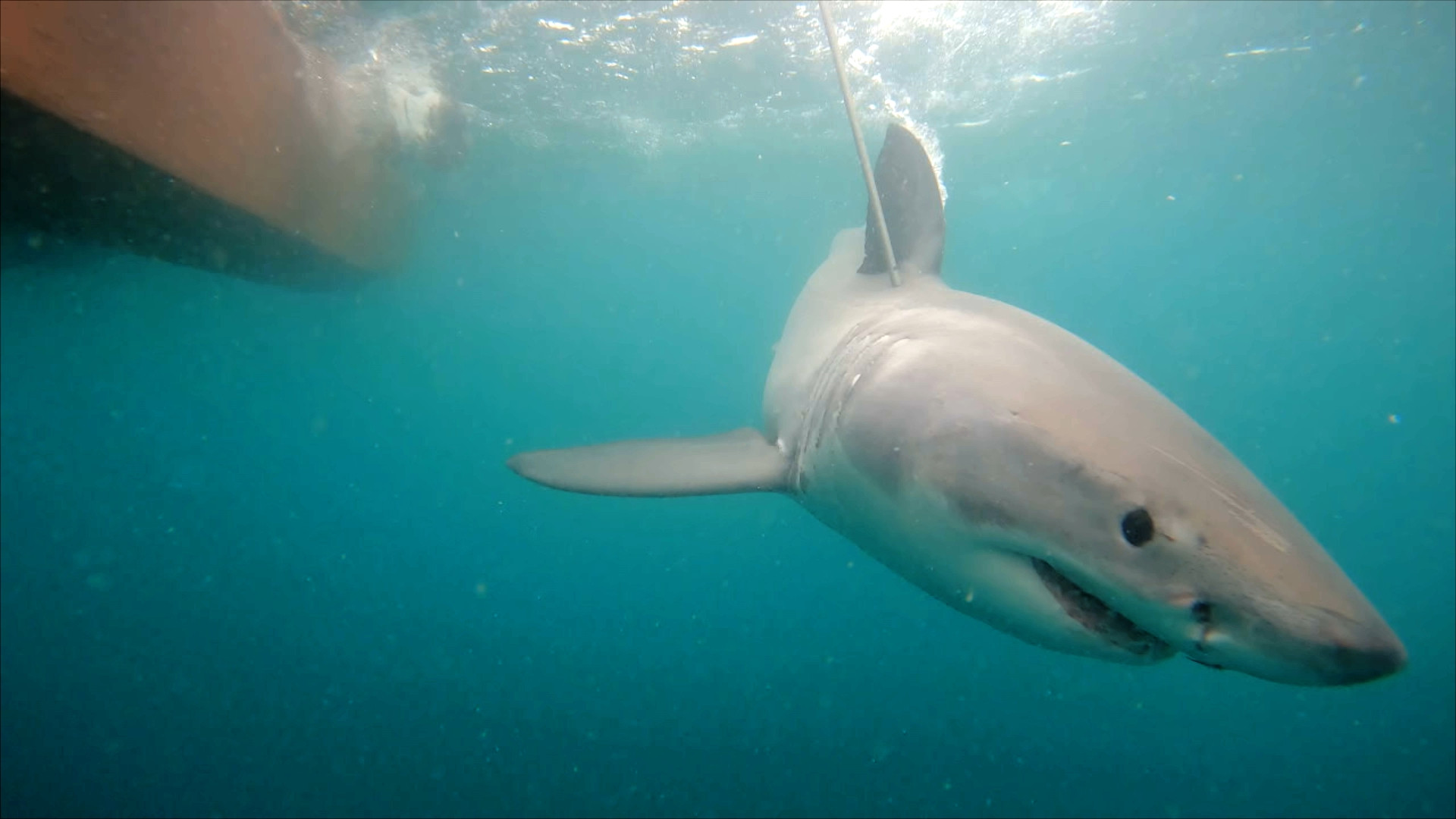
Great white sharks off the coast of South Africa are feasting on other sharks — with these fish making up a larger proportion of their diet than seals, researchers have discovered. The great whites in Mossel Bay, known for their aerial attacks on prey and deadly clashes with orcas, appear to be hunting at the mouths of rivers, where smaller sharks congregate to breed.
The Mossel Bay coastline is a great white shark (Carcharodon carcharias) hotspot, with an estimated 40 to 60 individuals stalking the waters at any one point. Researchers originally thought the big fish were drawn to the area by an abundance of their favorite prey: cape fur seals (Arctocephalus pusillus). Seal Island — a small rocky landmass about 2,000 feet (610 meters) from the shore of Mossel Bay that is home to around 4,000 seals.
But something didn't add up. In "Shark Eat Shark," a new program that's part of National Geographic's SharkFest, researchers explained that if seals were the sharks' main source of prey, around 1,500 seals would be killed per hunting season. Yet only 150 end up in these predators' bellies.
So what are they eating the rest of the time? "Our hunch is that they are spending more time hunting other sharks than seals," Lacey Williams, head field specialist at Oceans Research, said in the film.

To find out, Williams and Enrico Gennari, a shark scientist who specializes in the study of great whites, used tracking data to see where the sharks were going during seal breeding season, a period when fewer seals enter the water, making them far less abundant as a source of prey.
They realized the sharks were gathering around three river mouths where lots of other, smaller shark species live, breed and feed, so the researchers deployed underwater cameras to see what was happening beneath the surface.
The team captured dramatic footage of a catshark swimming along the seafloor, but when great white appears and the catshark freezes. "The catshark appears to play dead," Neil Hammerschlag, director of the shark research and conservation program at the University of Miami, said in the program. "What's super cool is it's not even breathing, it's holding its breath, by doing that it's not pumping water out of gills that would otherwise be generating a weak electric field the great white shark would pick up… I've never seen footage of this kind ever before," he added.
"When you actually look at the behavior of the sharks on the videos, they act like they're scared of great white sharks. And you know what runs from white sharks? White shark food."

The researchers then turned their attention to the species they think great white sharks are dining on — smooth-hound sharks (Mustelus mustelus), which grow to about 6 feet (1.8 meters) in length. After fitting 20 smooth-hounds with tags that emit a different signal if the shark is eaten, the researchers watched as the smooth-hounds were gobbled up one by one. "They are in the stomach of something much bigger," Gennari said, adding that "70% of tagged sharks have been eaten."
To confirm what was predating on the tagged smooth-hounds, the team gathered muscle tissue from great whites. Fatty acids in their food leaves a signature in this tissue that shows what the predator has been eating — and findings show their diets are dominated by other sharks.
"We knew that white sharks eat other sharks, but this study is revealing the extent may be greater than previously appreciated, even in white sharks living near seal colonies," Hammerschlag told Live Science in an email.
"I think our view of white shark feeding is biased, because the places where humans can easily find and observe white sharks are at seal colonies. It's actually not that easy to catch a seal; seals are smart and aggressive — with large canines and claws that can injure white sharks. Many white sharks bear wounds from encounters with seals. Catching and eating other sharks is probably easier and safer."
"Shark Eat Shark" premieres on National Geographic on July 2.







